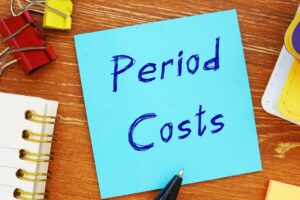Then, when you locate obsolete inventory and designate it as such, you credit the relevant inventory account and debit the obsolescence reserve account. This approach charges the cost of obsolescence to expense in small increments over a long period of time, rather than in large amounts only when obsolete inventory is discovered. That concludes the journal entries for the basic transfer of inventory into the manufacturing process and out to the customer as a sale. There are also two special situations that arise periodically, which are adjustments for obsolete inventory and for the lower of cost or market rule. When the asset is actually disposed of, the inventory account will be credited and the inventory reserve account will be debited to reduce both.
- Such adjustments can help maintain a healthy cash flow and avoid potential financial risks.
- Its net realizable value is reduced to $10 per unit while its original cost was $15 per unit previously.
- If a company’s inventory isn’t worth as much anymore, its financial records need to show that by changing the stated value to the actual lower value.
- Large, recurring inventory write-offs can indicate that a company has poor inventory management.
An inventory write-down affects a company’s financial statements (balance sheet and income statement) and overall financial health. It lowers the company’s reported income and the taxes it needs to pay. However, there are times when the value of inventory decreases due to various factors such as obsolescence, damage, theft, changing market conditions, and more. In such cases, businesses need to conduct an inventory write-down to reflect the loss of value accurately. Inventory refers to assets owned by a business to be sold for revenue or converted into goods to be sold for revenue. Generally accepted accounting principles (GAAP) require that any item that represents a future economic value to a company be defined as an asset.
Reasons for an Inventory Write-Down
For instance, ShipBob’s lot feature allows you to separate items based on their lot numbers. When you send us a lot item, we will not store it with other non-lot items, or other lots of the same item. The allowance method is a more elaborate process since some money is set aside to cover inventory that might lose some or all of its value in the future.
- Calculating an inventory write-down requires determining the difference between an asset’s book value and the amount of cash that can be obtained by disposing of the asset in the most optimal manner.
- An inventory write-down is like a correction for when the value of inventory drops below what’s listed on the books.
- When you invest so much capital, you would want to get good returns.
- In practice, the three most common inventory accounting methods are the FIFO, LIFO and average cost methods.
Hence, the company ABC decides to write down the value of its inventory to comply with the acceptable accounting standard. The inventory write-down follows the concept of lower of cost or net realizable value which is the conservatism concept of accounting. In this case, as the inventory is initially measured at cost, if its net realizable value is lower than the cost later, the loss will occur and the value of inventory should be written down accordingly. By separating the COGS from the stock that needs to be written off, your gross profit will be unaffected by inventory write-offs.
How Does an Inventory Write-Down Impact the 3 Financial Statements?
The transaction will increase inventory shrinkage which is the expense on income statement. Some companies may use different account names such as inventory loss, inventory damage, and so on. Reducing the value of outdated, damaged, how do i file form 1041 for an estate or trust misplaced, or stolen inventory can bring numerous benefits to a business. By writing down the value of inventory, businesses can more accurately reflect the balance sheet value, freeing up space and reducing storage costs.
It is one of the most important assets of a business operation, as it accounts for a huge percentage of a sales company’s revenues. Let’s recap the effect of the different methods of applying COGS, gross profit, and ultimately, net income, assuming that total selling, general, and administrative expenses of Geyer Co. are $735,000. This can be done by subtracting the cost of goods sold from the total cost of the inventory.
How is an Inventory Write-Down Calculated?
If the change isn’t big, debit the lower value to the COGS and credit it from the inventory account. If it’s a big value change, note it separately and do the same thing. So, they’ll lower the phone value in their records by Rs. 1,000, and the cost of goods sold (COGS) goes up by the same amount. Remember, if the decrease in value isn’t too big, it can be added to the COGS column. But a bigger value decrease must be recorded in a separate line on the financial report.
Inventory Write-Off: Definition as Journal Entry and Example
Applying LCNRV to total inventory gave us a NRV of $274,610 (see Inventory List in prior reading) which was higher than total cost, so there would be no adjustment necessary. We just left each inventory item listed at cost, even though some of the items had an NRV less than cost (first column). Inventory write-downs can also help businesses to avoid overstocking, as they are more aware of the current stock levels and can make better decisions on ordering and stocking new inventory.
Inventory Write-Down: An Essential Guide for Businesses
The difference between an inventory write-down and an inventory write-off boils down to how much value is involved. Write-downs mean lowering inventory value, while write-offs mean completely removing the value. Both happen for similar reasons, like things getting old, market shifts, damage, or items being lost, stolen, or spoiled. But when you write off inventory, you take these worthless items off the books. Sometimes, the value of inventory will drop significantly due to physical deterioration, obsolescence, or decline in the market price, etc. Likewise, if this happens, the company will need to make the inventory write-down journal entry to reduce the value of the inventory to its net realizable value.
If a company’s inventory isn’t worth as much anymore, its financial records need to show that by changing the stated value to the actual lower value. But often, loss on inventory write-down happens because of bad inventory management. The company can make the inventory write-down journal entry by debiting the loss on inventory write-down account and crediting the inventory account.
An inventory write-down is like a correction for when the value of inventory drops below what’s listed on the books. This correction affects a company’s balance and income statements, ultimately affecting its overall earnings. For example, on December 31, due to obsolescence, one of the inventory items loss its value significantly.




